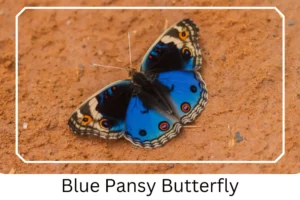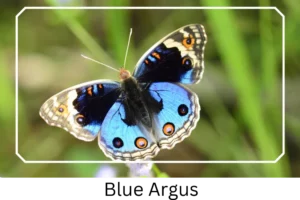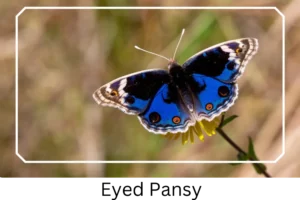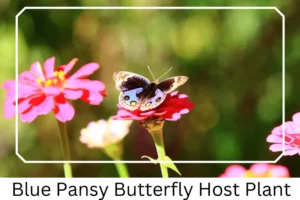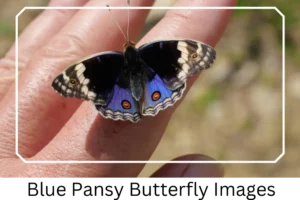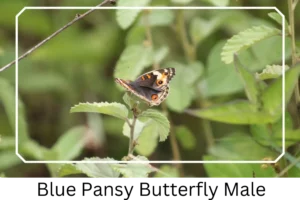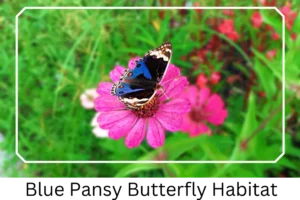Blue Pansy (Junonia orithya)
The Blue Pansy, a captivating species of butterfly, thrives in the diverse landscapes of Southeast Asia, Australia, and Africa. Predominantly celebrated in India, these bright blue arthropods command attention with their territorial nature and are distinguished by their 26 local subspecies. Revered for their affinity for sunlight, Blue Pansies are often observed basking on bare ground, embracing the warmth and light with open wings.
Scientific Classification
- Family: Nymphalidae
- Genus: Junonia
- Common names: Eyed pansy (Africa)
- Scientific Name: Junonia orithya
Overview
The enchantment of the Blue Pansy butterfly extends beyond its striking coloration to its fascinating life cycle and behaviors. This species exhibits a remarkable adaptation to its environment, making it a subject of interest for both enthusiasts and researchers. From its larval stage to its majestic adulthood, the Blue Pansy butterfly showcases nature’s intricacies through its physical characteristics and life habits.
Description and Identification
Caterpillar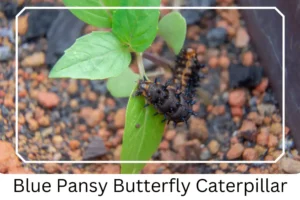
The caterpillar stage of the Blue Pansy Butterfly is a sight to behold, with its body covered in perpendicular spines and radial hairs. Predominantly dark brown or black, the larva features a unique orange patch on its bifurcated head, complemented by two spines and small spine-like structures near the eyes, portraying nature’s detailed craftsmanship.
Pupa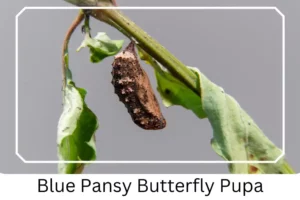
Transitioning into the pupal stage, the chrysalis exhibits a purple body elegantly suspended by its tail. Its wing-cover part contrasts with a dirty yellow hue, embellished with dull creamy-white lines, while the abdominal region is adorned with slightly angular projections, hinting at the transformation within.
Adult Butterfly
Sexual Dimorphism:
The adult phase of the Blue Pansy Butterfly reveals distinct sexual dimorphism. Males and females showcase variations in their wing patterns and colors, marking the differences between the sexes.
Color and Appearance:
Males boast black forewings edged in white and brown, with thin black lines converging towards the wingtips and a notable orange-yellow eyespot. The secondary wings shimmer in bright cyan blue, framed by white borders and accented with orange eye marks. Females, however, display a dominance of brown with subtle dirty blue patches, particularly at the base of the hind wings. When the wings are closed, both genders present a grayish-brown color with orange-brown markings, maintaining the characteristic eye-spots.
Average Wingspan: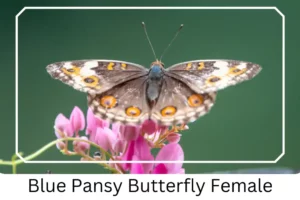
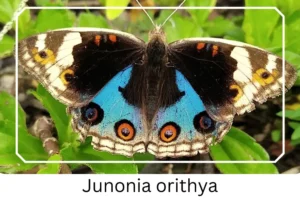
The Blue Pansy Butterfly spans approximately 4 cm across its wings, demonstrating the compact yet profound beauty of this species.
Flight Pattern:
Characterized by a stiff flap-and-glide style, the flight of the Blue Pansy Butterfly mirrors its lively essence, captivating onlookers with its aerial grace.
Eggs
The reproductive cycle continues as the Blue Pansy lays its eggs, green in color, singularly on the young shoots or newly-grown leaves of host plants, ensuring the next generation’s survival.
Quick Facts | |
| Distribution | Spanning from Southeast Asia, including India, to Africa and Australia. |
| Habitat | Prefers sunny open lands and grassy patches within open areas. |
| Host Plants | Utilizes leaves from families such as Acanthaceae, Annonaceae, and more. |
| Adult Diet | Primarily feeds on the nectar of flowers. |
How to Identify Blue Pansy?
Identifying the Blue Pansy butterfly involves observing several distinctive features. Look for the bright cyan blue coloration on the secondary wings of males, a signature trait. Females, while generally browner, exhibit a unique patch of blue at the base of their hind wings, making them distinguishable. The presence of orange eye marks on both sexes when the wings are spread is another key identifier. Additionally, their preference for sunlit, open areas and the stiff flap-and-glide flight pattern are behavioral traits that aid in recognition. When the wings are closed, the grayish-brown hue with orange-brown markings across both genders provides a subtle hint of their identity, making the Blue Pansy a fascinating species to spot and identify.
Did You Know?
- Blue Pansies often form ‘all-boys groups,’ where males congregate in the sunlight, showcasing their vibrant colors in unison.
- This butterfly is not just a visual marvel; it plays a crucial role in the pollination process, contributing to the health of their habitats.
Conclusion
The Blue Pansy butterfly, with its vivid hues and fascinating life cycle, is a testament to nature’s beauty and complexity. From the detailed description of its developmental stages to the intriguing behaviors exhibited throughout its life, this species offers a glimpse into the wonders of the natural world. Whether you’re an avid butterfly enthusiast or a curious observer, the Blue Pansy serves as a vibrant reminder of biodiversity and the importance of conserving our planet’s precious ecosystems.
Blue Pansy Pictures

Scientific Classification

- Family: Nymphalidae
- Genus: Junonia
- Common names: Eyed pansy (Africa)
- Scientific Name: Junonia orithya

